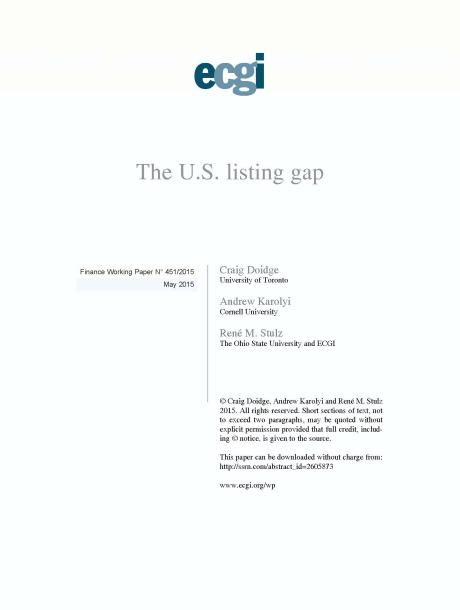
The U.S. Listing Gap
Abstract
The U.S. had 14% fewer exchange-listed firms in 2012 than in 1975. Relative to other countries, the U.S. now has abnormally few listed firms given its level of development and the quality of its institutions. We call this the ?U.S. listing gap? and investigate possible explanations for it. We rule out industry changes, changes in listing requirements, and the reforms of the early 2000s as explanations for the gap. We show that the probability that a firm is listed has fallen since the listing peak in 1996 for all firm size categories though more so for smaller firms. From 1997 to the end of our sample period in 2012, the new list rate is low and the delist rate is high compared to U.S. history and to other countries. High delists account for roughly 46% of the listing gap and low new lists for 54%. The high delist rate is explained by an unusually high rate of acquisitions of publicly-listed firms compared to previous U.S. history and to other countries.







